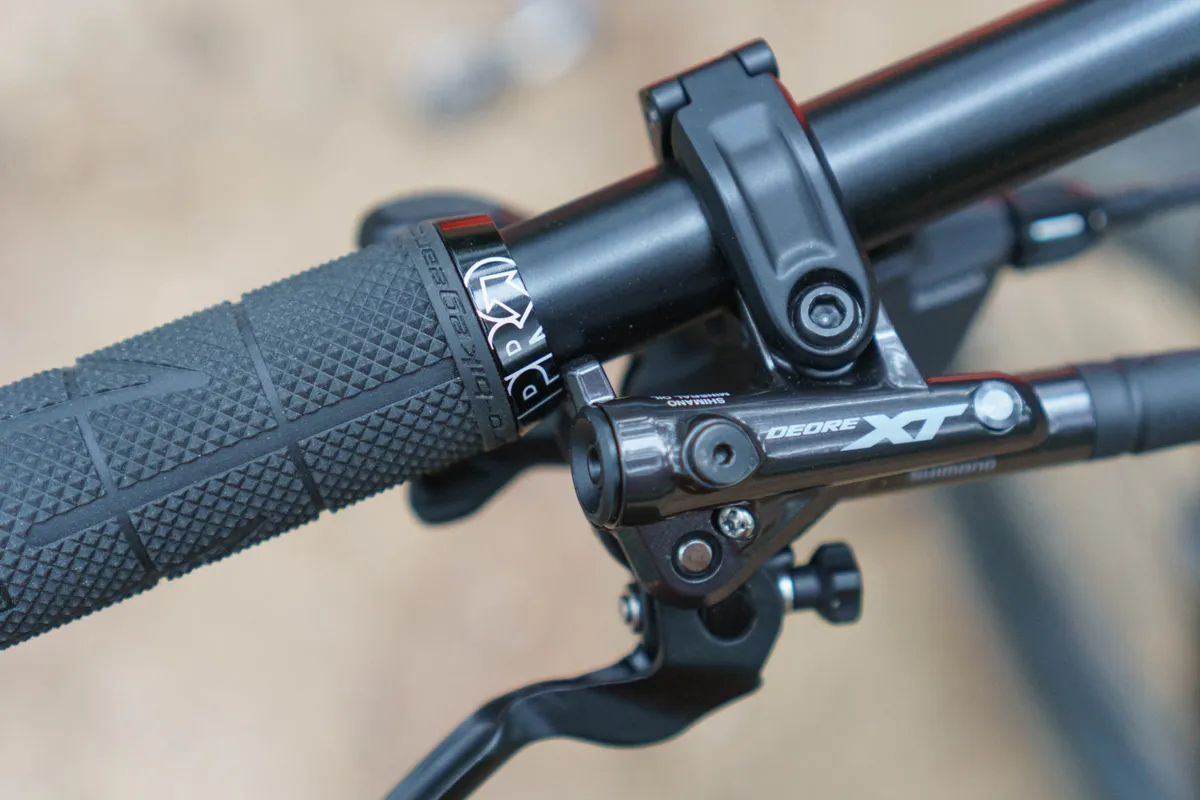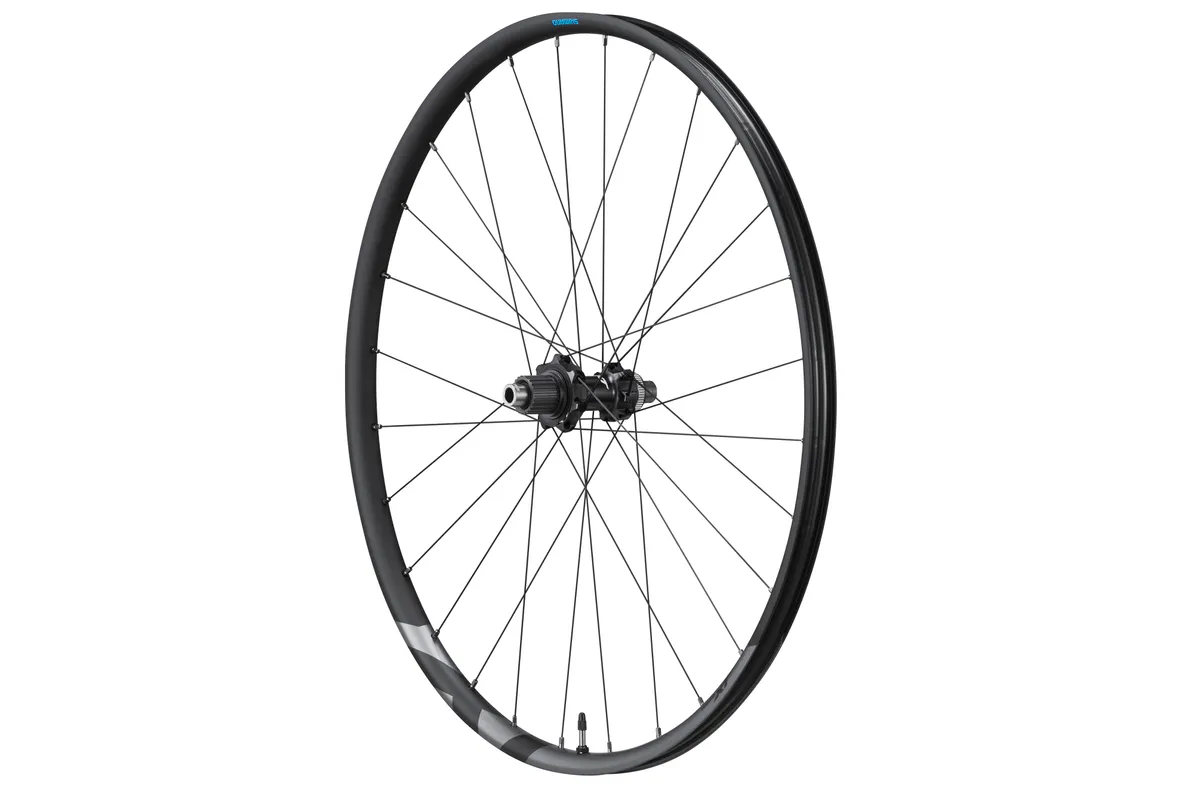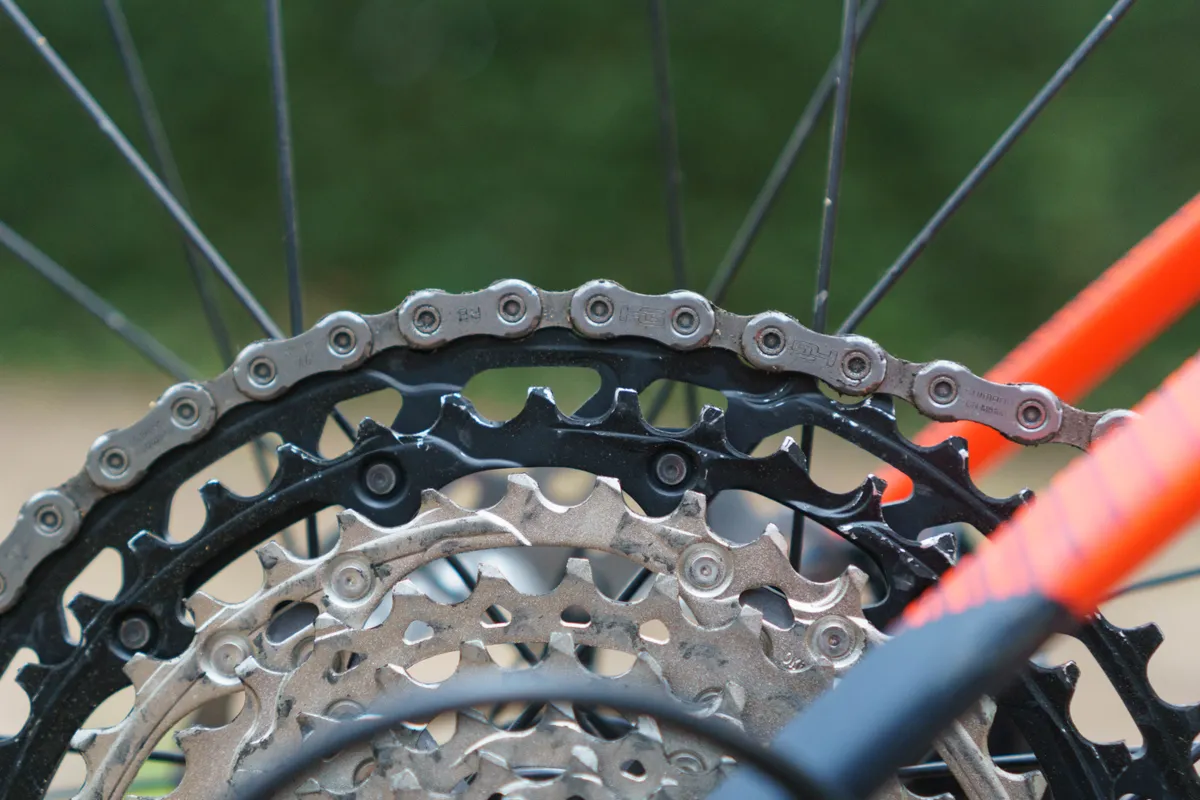Shimano has today released its new 12-speed versions of SLX and XT, the company's second- and third-tier mountain bike groupsets.
As we have come to expect from Shimano, the two new groupsets feature tonnes of trickle-down tech from last year’s 12-speed XTR M9100 groupset and, by Shimano’s own admission, the gap between its flagship option and its cheaper groupsets is closer than ever.
- Mountain bike groupsets: everything you need to know
- Shimano XTR M9100 groupset first ride review
- Shimano XTR M9100: everything you need to know
What are Shimano’s new 12-speed mountain bike groupsets called?
Naming conventions in Shimano’s lineup have finally begun to stick, with the new groupsets following the 8*00 (XT, second tier) and 7*00 (SLX, third tier) nomenclature.
- Shimano Deore XT 12-speed — M8100
- Shimano SLX 12-speed — M7100
For reference, these naming conventions are used across both Shimano’s road and mountain bike groupsets (105 = R7000, Ultegra = R8000 and so on). We hope Shimano sticks with this in the future as it makes the lives of end users and narky journalists that bit easier.
Shimano XT M8100 and SLX M7100 highlights
Are Shimano’s SLX and XT mountain bike groupsets 12-speed?
That both of the groupsets have moved to a 12-speed drivetrain is, of course, the big news.
Shimano introduced 12-speed drivetrains into its lineup with the XTR M9100 last year. These are the first cheaper groupsets to add another cog.
While the fact that SLX and XT are now 12-speed is interesting, how those 12 cogs are mounted to a hub is the truly interesting thing.
Do SLX M7100 and XT M8100 use a Micro Spline freehub?

Yes. Both SLX and XT adopt Shimano’s new-ish Micro Spline freehub.

Micro Spline was first introduced with XTR M9100 and allows the use of a 10t cog. Shimano’s long-standing HG freehub standard had a minimum cog size of 11t. This additional cog increases the range of the cassette.
We think the adoption of Micro Spline is the headline feature from the launch of the two new groupsets.
Where SRAM has stuck with HG-style freehubs for its lower-end 12-speed groupsets, Shimano is adopting Microspline right down to an SLX level, suggesting more is yet to come.
Whether that includes a move to Micro Spline on the road side of things remains to be seen, but we personally wouldn’t be surprised to see this happen.
Before you get your pants in a panic worrying about spares availability, Shimano still produces screw-on freewheels for a range that became obsolete a very long time ago. As such, it’s probably safe to assume HG cassettes will be around for a long time.
As of writing, only a handful of manufacturers are licensed to produce hubs with the new freehub body: DT Swiss, Industry Nine and Shimano itself being the key players.
When we asked at the launch when other brands were likely to join this number, it was confirmed that Mavic, Newman, Syncros and others will announce the release Micro Spline-equipped wheels by the time this story is published.
Given both the groupsets — particularly SLX — are almost certainly going to be enormously popular OEM-spec choices, I think it’s safe to assume we’ll see a wave of hub manufacturers start licensing the design in the next few weeks.
Believe the Hype(perglide+): Hyperglide+ explained
Hyperglide+ is a system of funky forming, ramps and pins on the cassette and chain that are designed to aid shifting up and down the cassette, particularly when under high loads.
When shifting down the cassette — i.e. onto a smaller cog — the Hyperglide+ ramps essentially ‘hold’ the chain in place before it fully engages with the smaller cog. This results in a smoother transition between gears.
The XT cassette features 10 steel cogs, with the two largest made of alloy. The SLX-level option features 11 steel cogs and one alloy. Both are mounted to an alloy spider and are available in either 10-45t or 10-51t ratios.
Better brakes and more options

Both XT and SLX get the option of either a four- or two-pot brake caliper. The former is aimed at enduro/trail riders and the two-pot version is aimed at weight-conscious XC racing types. Unlike XTR, the same lever is used for either caliper.
Notably, there is no flat mount version of either the SLX or XT calipers available. This standard, originally developed for the road, has found favour on many modern XC bikes. An XTR Race level flat mount caliper is available.

All brake levers get a nifty bracing nubbin that sits towards the outboard end of the reservoir. This adds an additional bracing point to the brake lever and improves lever stiffness notably.

All brakes, shifters and Shimano’s own SM-MT00-IL dropper lever are compatible with the new i-Spec EV standard.
This new standard, introduced with XTR M9100, is said to make fine adjustments to cockpit position easier, with up to 14mm of lateral adjustment and 20 degrees of rotational adjustment to shifters or dropper levers possible.
More cranksets than ever
With the new 12-speed XT and SLX groupsets, different chainlines are accomplished by changing the length of the spindle and using different combinations of spacers.
To be clear, as with previous generations of HollowTech2 cranksets, the spindle is fixed to the driveside crank arm — achieving a correct chainline is dependent on you ordering, or your OEM speccing, the right crank.
The specs, including the Q-factor — the width between the outside face of each pedal eyelet — of each version of the cranks is as follows:
- 52mm chainline, for 142 or 148mm rear end, 172mm Q-factor
- 55mm chainline, for 148mm rear-end with wider tyres, 178mm Q-factor
- 56.5mm chainline, for Super Boost 157mm rear-end, 181mm Q-factor
A double chainset is available in one ratio (36-26) for both groupsets. It’s worth noting that this is the first ever generation of XT and SLX to totally do away with a triple chainring option. XTR is also only available as a 1x or 2x option. The specs for the double crank are:
- 51.8mm chainline for 148mm rear-end, 178mm Q-factor
If you are looking for a narrower Q-factor, XT or SLX isn’t for you — only XTR M9100 is available with a Q-factor narrower than 172mm, coming in at 162 or 168mm depending on the option you go for.

Note that both SLX and XT cranksets also use Shimano’s new direct-mount chainring standard. It may look as though the chainring is mounted to a spider, but this is actually part of the chainring itself. XTR’s chainrings are a one-piece design.
A diminutive 28t chainring is available for both XT and SLX. This option was not available for XTR. On the other hand, a 38t chainring — a favourite for fast marathon races — is available at an XTR level and not on XT or SLX. This needn’t matter though because...
Compatibility is king
All 12-speed Shimano mountain bike components are compatible with each other.
Want to run an XTR crankset on your SLX groupset (weird)? You’re sorted. Want to make an upgrade to shifting ergonomics and swap your SLX shifter for an XT or XTR model? Not a problem.
This is big news and a welcome move for Shimano — it’s not unheard of to have had some weird proprietary chainring bolt circle diameter (BCD) or other complication that has made its groupsets incompatible with each other in years gone by.
On that note, two-piston caliper pads remain the same as the outgoing generation, but four-piston calipers use an all-new design.
Whether or not Shimano will follow SRAM’s example — with all of its 12-speed road and mountain bike components being compatible with each other — when the inevitable update to its road lineup arrives remains to be seen.
Shimano XT wheels and hubs for all

Shimano has also launched two new XT wheelsets. There are no SLX-level complete wheelsets.
The XC version features a 24mm (internal) wide rim that is suited for tyres up to 2.35in wide. These are claimed to weigh 1,764g for the 27.5in version and 1,840g for the 29in version. Unlike the previous generation XT wheels, these feature a solid rim bed, meaning tape is not required for tubeless setup. These wheels use a straight-pull spoke setup.
An enduro-focussed wheelset with a 30mm internal rim is also available. It is not clear from the press release whether this wheelset features the same closed rim bed. Unlike the XT XC wheels, the trail wheels are built around traditional J-bend spokes. These wheels are claimed to weigh 1,846g for the 27.5in version and 1,932g for the 29in version.
Both wheelsets are only available in Boost versions.

A full complement of traditional J-bend hubs are available in 148, 142, 110 and 100mm widths at both an SLX and XT level. Only centrelock hubs are available and, as you would expect, these are built around the Micro Spline standard.
How does Shimano 12-speed perform? Is Shimano XT worth the money?

These questions and many more are answered in our dedicated Shimano SLX M7100 vs XT M8100 article!
What’s next for Shimano?
While there’s a lot to be excited about, and both groupsets appear to perform well, for now, all eyes will be focussed on how Shimano actually delivers its new products.
XTR M9100’s delivery has been less than stellar with most still some months out from receiving a group. Dropping Sylence — Shimano’s silent freehub technology and one of XTR’s flagship features — alongside running changes to the cranks have undoubtedly damaged its image.
However, given Shimano’s dominance in the OEM market and the lead times involved with building bikes, orders for the new groupsets will have likely been placed some time ago.
The consequences of not delivering on these orders would be enormous, so this will hopefully translate into good availability for end users. And on that note...
Details are still fresh
We have not included full groupset weights in this article because a complete weight is dependent on how you spec the groupset. This is particularly true of Shimano groupsets because including variations, such as double groupsets, only complicates matters. However, we have included claimed weights for each component in our Shimano SLX M7100 vs XT M8100 article. You can calculate a rough total weight from this.
When will Shimano XT and SLX 12-speed groupsets be available?
The new Shiman0 XT M8100 and SLX M7100 groupsets are due to ship around July. After-market components will be available from a number of — as of yet undisclosed — “selected priority retailers” from 14 June.
What do you think? Is Shimano late to the affordable 12-speed party or has it cooked up a perfect storm? Be sure to leave your thoughts and any questions in the comments!



